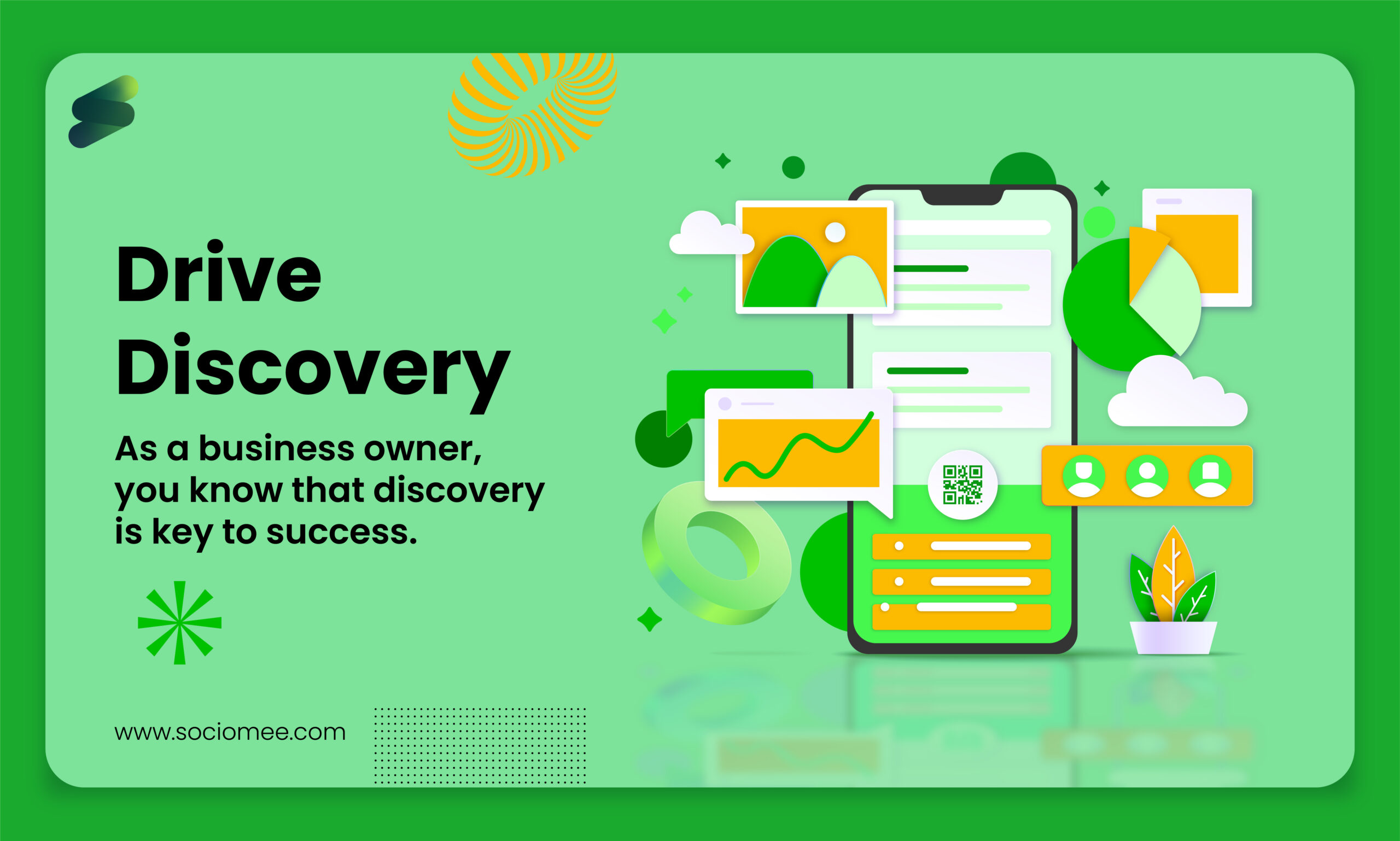As a business owner, you know that discovery is key to success. But what happens when your customers can’t find your products? Product tags can be a powerful discovery tool, helping customers find your products and driving sales. When customers search for products on your site, they’re looking for specific tags that will help them narrow down their options.
By tagging your products with relevant keywords, you can ensure that your products show up in search results and drive discovery. In this article, we’ll show you how to use product tags to drive discovery for your business.
We’ll cover how to choose the right tags for your products, how to promote your tags, and how to measure your success. By the end of this article, you’ll have everything you need to start using product tags to drive discovery for your business.
#1. How can product tags help your business?
Product tags are a powerful way to help customers find the products they need on your website or online store. By tagging products with relevant keywords, you can make sure your products come up in search results when customers are looking for them. In addition to helping customers find your products, product tags can also help you keep track of your inventory.
By tagging products with unique IDs, you can quickly and easily see which products are in stock and which ones need to be reordered. Product tags can also be used to create special offers and promotions. For example, you could create a tag that gives customers 10% off their purchase if they use it during checkout.
Using product tags can be a great way to boost your sales and improve your customer service. By taking the time to tag your products properly, you can make sure your customers can find what they need and take advantage of special offers.
Connect with new world
#2. What are the benefits of using product tags?
Product tags are small, often rectangular labels that contain important information about a product. This information can include the product’s name, price, size, and manufacturer. Product tags are most commonly found on clothing, but can also be found on other items such as luggage, books, and electronics. Product tags serve a few important purposes.
- First, they provide basic information about the product that can help the customer make a purchasing decision. For example, a product tag on a piece of clothing might include the fabric content, washing instructions, and colour. This allows the customer to know what they are buying and make sure it is the right product for them.
- Second, product tags can help to brand a product. A well-designed product tag can make a product look more professional and high-quality. This can help to attract customers and encourage them to purchase the product.
- Third, product tags can help to track inventory. This is particularly important for businesses that sell products in multiple locations. By scanning the product tags, businesses can quickly and easily see which products are selling well and which ones need to be reordered.
- Overall, product tags are a helpful tool for businesses and customers alike. They provide important information about the product and can help to brand and track inventory.
Connect with new social community
#3. How can product tags improve your customer's experience?
Product tags are often overlooked as a minor detail in the grand scheme of ecommerce, but they can actually play a significant role in improving your customer’s experience. Product tags can help customers find what they’re looking for more easily, and they can also provide valuable information about a product. In addition, well-written and descriptive tags can help customers make better-informed purchase decisions.
Here are a few ways that product tags can improve your customer’s experience:
- Product tags can help customers find what they’re looking for more easily: If your tags are descriptive and well-written, they can help customers narrow down their search and find the products they’re looking for more quickly. This can save customers a lot of time and frustration, and it can lead to more sales for your business.
- Product tags can provide valuable information about a product: In addition to helping customers find what they’re looking for, tags can also provide valuable information about a product. This can include things like size, color, material, or any other important details that customers need to know.
- Well-written and descriptive tags can help customers make better-informed purchase decisions: In addition to providing valuable information, well-written and descriptive tags can also help customers make better-informed purchase decisions. This is because they can give customers a better idea of what they’re buying, and they can help customers compare different products more easily.
Overall, product tags can play a significant role in improving your customer’s experience. If you’re not using tags, or if you’re using them but not taking advantage of their full potential, now is the time to make a change. Implementing even a few of the tips above can make a big difference in the way your customers shop on your site.
#4. How can product tags help you discover new products?
Product tags are a great way to discover new products. By searching for a specific tag, you can find products that are related to that tag. For example, if you are looking for a new book to read, you can search for the tag “books” and find a list of books that have been tagged by other users. You can also use product tags to find products that are similar to ones that you have already purchased. For example, if you have purchased a book from ECommerce Platform, you can search for the tag “books” and find a list of other books that are similar to the one you purchased.
This can be a great way to find new products that you may be interested in. Product tags can also be used to find products that are on sale. For example, if you are looking for a new book to read, you can search for the tag “books” and find a list of books that are on sale. This can be a great way to save money on your next purchase. In conclusion, product tags can be a great way to discover new products.
By searching for specific tags, you can find products that are related to that tag. You can also use product tags to find products.
#5. How can product tags help you target your marketing?
Product tags can help you target your marketing in a few ways.
- First, you can use them to segment your audience by product type. For example, if you sell both men’s and women’s clothing, you can use tags to send different messages to each group. This can be helpful if you want to target your marketing to a specific gender.
- Second, you can use tags to target specific products. For example, if you have a new line of products that you want to promote, you can target your marketing to people who have purchased similar products in the past. This can be done by using product tags to target ads and emails to specific customers.
- Third, you can use tags to target customers based on their location. For example, if you have a physical store and an online store, you can use tags to send different messages to customers in different locations. This can be helpful if you want to target your marketing to a specific region or city.
- Fourth, you can use tags to target customers based on their purchase history. For example, if you have a loyalty program, you can use tags to send different messages to customers based on how often they purchase from you. This can be helpful if you want to target your marketing to your best customers.
- Finally, you can use tags to target customers based on their interests. For example, if you sell products that are related to a hobby, you can use tags to send different messages to customers who have expressed interest in that hobby. This can be helpful if you want to target your marketing to a specific interest group.
Product tags can be a helpful way to segment your audience and target your marketing. By using tags, you can send different messages to different groups of people, which can help you improve your marketing campaigns and reach your target customers.
#6. How can product tags help you save time and money?
Most people don’t think about product tags, but they can be very helpful. Tags can help you save time and money by keeping track of your belongings. For example, let’s say you have a bunch of clothes in your closet. You can put a tag on each piece of clothing with the date you bought it. Then, when you’re looking for something to wear, you can quickly see what you’ve worn recently and what you haven’t.
This can help you save time by only looking at the clothes you know you haven’t worn in a while. Tags can also help you save money. For example, if you have a lot of books, you can tag them by genre. Then, when you’re looking for a particular type of book, you can quickly find what you’re looking for. This can help you save money by avoiding buying duplicates of books you already have. Product tags are a simple way to keep track of your belongings and save time and money.
#7. How can product tags help you measure your success?
Product tags can help you measure your success by providing data that can be used to track customer engagement and conversions. By understanding how customers interact with your product tags, you can optimize your marketing efforts to improve results. Product tags can be used to track customer engagement in a number of ways. For example, you can use tags to track how often customers click on a particular product tag, how long they spend viewing the product page, and whether they add the product to their cart or purchase it.
This data can be used to understand what product tags are most effective at driving engagement and conversions. Additionally, product tags can be used to track where customers come from when they view your product page. This data can be used to understand which marketing channels are most effective at driving traffic to your product page. By understanding the customer journey, you can optimize your marketing efforts to improve results.
Product tags can provide valuable data that can be used to measure your success. By understanding how customers interact with your product tags, you can optimize your marketing efforts to drive more traffic and conversions.
#8. How can product tags help you keep your customers coming back?
Product tags can be helpful in keeping your customers coming back in several ways. For one, they can help you keep track of what your customers have purchased in the past and make it easier for them to find what they are looking for when they come back to your store. Additionally, product tags can help customers remember what they liked about a product they purchased from you in the past, which can encourage them to come back and purchase it again.
Finally, product tags can help you create a more personalized shopping experience for your customers by allowing you to recommend similar or related products to them based on their past purchases. Ultimately, product tags can be a valuable tool in keeping your customers coming back to your store.
Conclusion
Product tags are a powerful tool for driving discovery for your business. By tagging your products with relevant keywords, you can ensure that your products are more likely to be discovered by potential customers. In addition to tagging your products with relevant keywords, you can also use product tags to track customer behaviour and preferences. By analysing the data from your product tags, you can gain insights into what customers are looking for and how they interact with your products.
By using product tags to drive discovery for your business, you can improve your chances of reaching potential customers and understanding their needs.









